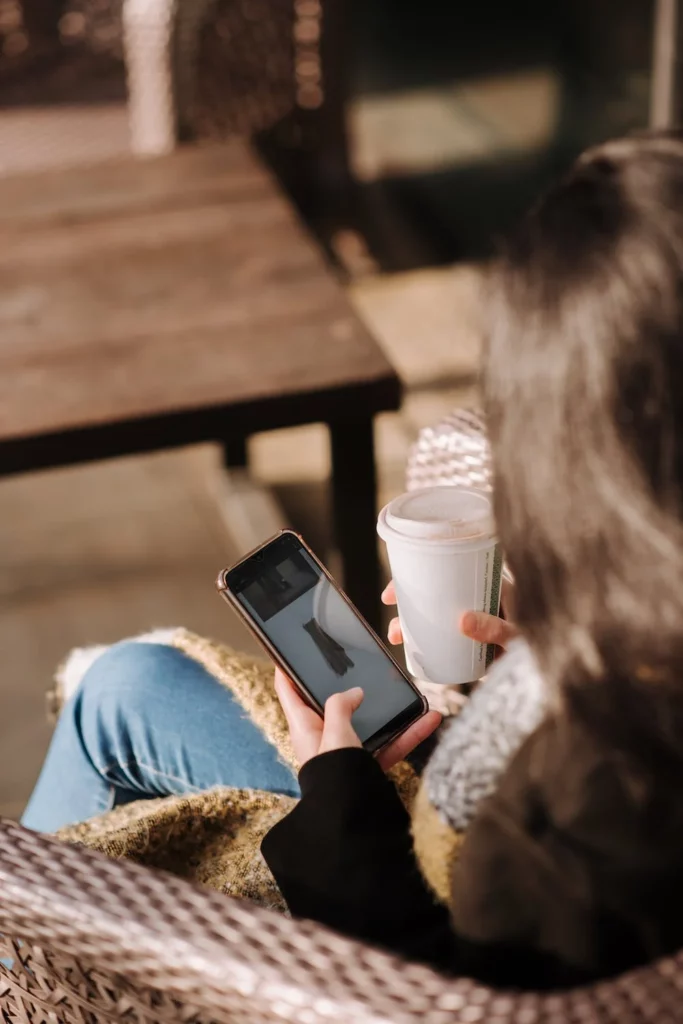
Context
The global consumption of coffee per second is estimated at 255 kg. In some countries such as Finland, the average consumption reaches 4 cups a day per capita. Since caffeine is known to be a powerful psychostimulant which excites the mind and the body for hours within seconds of the intake, one can wonder how its daily consumption may affect consumer behavior. Particularly, given the ubiquity of establishments that serve caffeinated drinks near stores (for instance within shopping malls), Biswas, Hartmann, Eisend, Joachims, Apaolaza, Hermann, Lopez and Borges discuss the possible effects of caffeine consumption on shopping behavior, in their article published in 2022 in the Journal of Marketing.
Research questions
The starting point of this research is the fact that caffeine intake enhances arousal. Usually, since caffeine is consumed at small doses, it makes consumers active and energized (energetic arousal) rather than tense and nervous (tense arousal). In turn, energetic arousal is known to increase impulse behavior such as overeating or low resistance to temptation. Therefore, the authors ask the following research questions:
– Does caffeine intake prior to a shopping experience impact consumer buying behavior?
– Does energetic arousal play a role in this potential effect?
– Is this potential effect consistent across product categories?
Method
To answer these research questions, the authors first conducted 3 field studies:
– Study 1 aimed at assessing the impact of caffeine consumption on the shopping outcome. It was conducted at a store that sells household goods in France on 96 participants. When entering the store, customers were offered either a complementary espresso or decaffeinated espresso (and knew if it was decaffeinated or not which was not the case in other studies). They were then asked if they were willing to show their receipt and shopping cart to the research team.
– Study 2 replicated the results of Study 1 on 90 female participants, in Spain. Participants were served an espresso (caffeine group) or a bottle of mineral water (control) and instructed not to consume any other food or beverage before the meeting and during their 2-hour shopping trip.
– Study 3 investigated the impact of caffeine intake on the consumption of high VS low-hedonic products on 145 participants. It was organized at a retail store of household goods in France. Participants were randomly given a regular espresso, a decaffeinated espresso or a bottle of water prior to their shopping experience.
Lab studies were run to improve the validity of the results:
– In Study 4a, 208 students from a French business school were given an espresso or a bottle of water and were randomly assigned images of low-hedonic products (notebooks and agendas) or high-hedonic products (relaxation gifts). They were asked if they wanted to purchase the products shown on the displayed images.
– In Study 4b, 222 participants were presented with a seemingly similar beverage, but some participants received the caffeinated version of the beverage while others received the decaffeinated variant. All of the sample were asked if they wanted to purchase relaxation gifts (high-hedonic products) displayed on images.
Results
– Caffeine consumption induces a state of energetic arousal that prompts impulsive buying. Consuming a caffeinated (vs non-caffeinated) beverage before shopping increases the number of purchased items and the overall spending.
– It seems that people with lower daily consumption of caffeine (up to 2.13 cups of coffee per day) are more susceptible to this effect than those with higher daily consumption of caffeine (more than 2.13 cups of coffee per day).
– This effect is stronger for high-hedonic products and attenuated for low-hedonic products. Many reasons can account for this result. First, consumers are more prone to impulse buying in high-hedonic product categories rather than low-hedonic product categories. Second, energetic arousal enhances the perception of hedonic product features and make options that provide immediate pleasure more appealing. Third, caffeine intake tends to increase sensation seeking and reward sensitivity behaviors.
Why is this article relevant for researchers?
This article provides strong results that were validated by several experiments in different settings and countries. This investigation is particularly interesting because of its innovativeness. It is probably on of the first times that the effect of a psychostimulant is used to explain shopping behavior. The choice of caffeine is particularly relevant given the proximity of establishments that serve coffee to stores.
This work paves the way for future research. For instance, the present studies essentially focus on in-store behavior: how does caffeine intake affect online experiences and buying behavior? Moreover, are other consumer attitudes and behaviors affected by caffeine intake? The authors notably point out that caffeine enhances memory, which should impact communication campaigns or attention to certain product attributes… Finally, other substances that affect the mind and body may impact consumer behavior. Notably, nicotine and ice are licit, widely consumed stimulants that might be worth investigating.
Why is this article relevant for professionals?
This article may be of interest to various stakeholders. First, this research warns companies about the positive financial ramifications of off-site consumer behavior. It may prompt professionals – and particularly those who operate in high-hedonic sectors – to entice consumers to consumer caffeine prior to the shopping experience to increase revenues. For instance, Ikea could make the most of its vending machines and on-site restaurants by proposing more caffeinated options, thus improving consumer interest towards high-hedonic products. In the same vein, this article shows that while some hairdressers consider complementary coffee to be part of “a high level of customer service” and “a personal experience”, it could be so much more than that: an incentive to indulge in better hair treatments and products, thus increasing the salon’s revenues. Finally, professionals could pair up with establishments that serve caffeinated drinks, in the same way that restaurants team up with cinemas.
This raises the ethical issue of prompting certain consumer behavior using a psychostimulant. This article reminds us that consumers should be aware of the potentially negative financial consequences of their caffeine intake. While current campaigns focus on the negative consequences of caffeine on the body and the mind (especially targeting specific audiences such as athletes or pregnant women), health institutions could provide further incentive for consumers to decrease their caffeine intake by showing them the financial consequences of their consumption. Banking institutions could also benefit from the present study results to discourage lavish spending.
